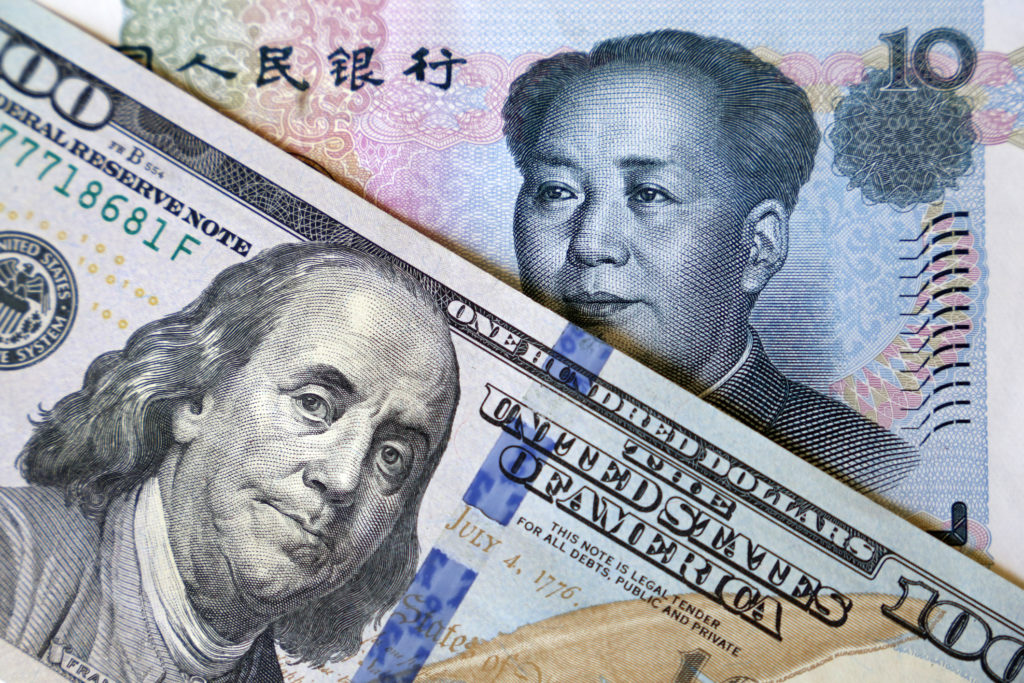
The United States is spending billions to shore up its manufacturing and has blacklisted a bunch of Chinese companies. But it also still imports a whole lot of stuff from China.
Quitting a two-decades long addiction is hard.
Despite a major shift in U.S.-China relations and the passage of significant industrial policy designed to increase American production in critical industries, the United States remains woefully addicted to Chinese imports. New data from the Commerce Department shows that the goods deficit with China increased in 2022 to $382.9 billion, and the U.S. imported a total of $536.8 billion worth of goods, a 6.3% jump over the previous year.
And while there were signals in 2022 that multinational corporations were looking to relocate production out of China, it is beginning to appear those moves may have been short-lived. The Wall Street Journal reported on Sunday that representatives of big brands like Apple, Pfizer, Mercedes-Benz, and Volkswagen have visited or are planning to visit China in the coming weeks. Here’s more:
“For some executives, site visits to local operations and meetings with managers are a priority, while others are looking to meet local business partners and government officials. Dozens of executives are expected to attend business conferences planned for the coming months in the country after China’s pandemic restrictions were dropped.
“The executive visits underscore how, despite the heightening geopolitical tensions, Western companies are looking to the business opportunity presented by China’s reopening.”
The divide on China between policymakers and big business — at least publicly — is pretty stark. While folks like Tim Cook are making nice with officials in China, Secretary of State Antony Blinken canceled a visit to China after the discovery of the suspected Chinese surveillance balloon eventually shot down by the U.S. military. Meanwhile, the United States has blacklisted dozens of Chinese firms, most recently adding six companies in the fallout from the now infamous balloon incident.
Indeed, much of the growing consensus is that the U.S. and China are headed to another Cold War, if we aren’t already in one. But the thing about Cold War II is that this time, the United States has a whole lot of money tied up in its relationship with its strategic rival — and we count on that rival for a lot of the stuff we need.
Forbes took a look at the top Made in China items imported by the U.S. in 2022, and the list includes everything from smartphones (No. 1 on the list, with $50.2 billion worth) to “wheeled toys, inflatable balls, puzzles and scale models” ($16.3 billion worth). But it isn’t just iPhones and plastic toys; top imports also include things that are considered crucial to national security, like lithium ion batteries and medicine.
And it’s going to take a whole lot of effort to bring this production home.
Joy Polefrone of the Alliance for Building Better Medicine appeared on our podcast on Monday to talk about how the Virginia-based organization is helping to rebuild the domestic pharmaceutical supply chain. The Alliance received $100 million to support its work, but it’s really just a drop in the bucket. Polefrone said:
“If you think about the investments that were made in India and China, where the vast majority of manufacturing happens on a global footprint, those investments were hundreds and hundreds of millions of dollars over many, many years. And when we think about bringing some of that essential supply back to the U.S., what has been invested by both the federal government and the state of Virginia is tremendous, and it’s a really huge infusion of energy and momentum into this region. And what’s happening on a national scale is also moving that forward. But, it’s really just the beginning of what we need to as a country if we are going to bring this capability set back to the U.S.”
The United States has begun to put some very good industrial policy into place recently, including the CHIPS and Science Act, Inflation Reduction Act, and Bipartisan Infrastructure Law. There’s no question that this investment is already is paying off, as new factories are beginning to be built all over the country.
But as Polefrone points out, it took decades of offshoring for the United States to find itself in the position of not being able to make the things it needs. It’s going to take time (and a whole lot of money) to build production back up.
One thing that’s clear is that the United States cannot count on multinational corporations to do the right thing out of the kindness of their hearts. Corporations enjoyed two decades of unfettered trade with China; they made a whole lot of money, and they aren’t thrilled about that free ride coming to an end. China’s government, meanwhile, is going to do all it can to keep the United States dependent on this lopsided trade relationship for as long as possible.
It’s on policymakers to get the job done. The industrial policy passed in 2022 must be the first step, not the last word. Meanwhile, the United States must be willing to enforce its trade laws and continue to take steps like outbound investment screening, so the Chinese Communist Party won’t gain access to U.S. technology — and reduce U.S. corporation dependence on China.
And this has to be a long-term, bipartisan effort. We are hopeful, for example, that the new select committee on China will focus on serious endeavors. But it’s easy to see how so much of this could fall prey to the partisanship so common in D.C. these days.
Policymakers cannot let that happen. China is playing the long game — and the United States must do the same.
The thing is, it’s doubtful that U.S.-China trade will disappear overnight, if at all. But the United States shouldn’t be so heavily dependent on our top geopolitical rival, especially when it comes to products so critical to our national security and economic independence.

